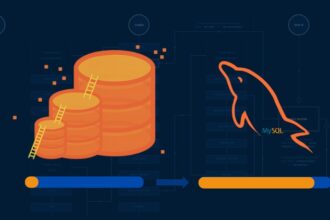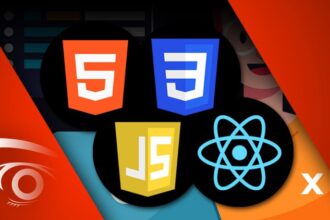What
You’ll Learn
You’ll Learn
- Automate repetitive tasks to speed up software development and deployment.
- Master cloud infrastructure management with hands-on labs using AWS services.
- Gain confidence in setting up CI/CD pipelines to streamline project workflows.
- Ensure high availability and system reliability with fault-tolerant cloud solutions.
- Develop skills in Infrastructure as Code (IaC) to efficiently manage cloud environments.
- This course equips you with essential DevOps skills that are highly sought after in the industry
- Preparing you to excel in roles like DevOps Engineer
- Cloud Architect
- or Site Reliability Engineer (SRE).
Requirements
- Basic Programming Knowledge: Familiarity with at least one programming or scripting language (such as Python
- JavaScript
- or Bash) is helpful but not mandatory.
- Understanding of Cloud Computing Concepts: A basic understanding of cloud services and infrastructure (e.g.
- what cloud providers like AWS offer) will be beneficial.
- Familiarity with Version Control Systems: Basic knowledge of version control systems like Git
- including cloning repositories and committing changes
- is recommended.
- Basic Networking and OS Skills: Understanding of networking fundamentals (e.g.
- IP addresses
- subnets) and basic Linux/Unix commands will be advantageous.
Description
This course is designed to transform your understanding of DevOps principles, focusing on automating Software Development Life Cycle (SDLC) processes, leveraging AWS CloudFormation for infrastructure as code, and implementing fault tolerance and disaster recovery strategies. Through practical demonstrations and hands-on labs, you’ll gain the skills needed to automate deployments, optimize cloud infrastructure, and ensure high availability and resilience in your applications.
Section 1: SDLC Automation
This section covers the end-to-end automation of the Software Development Life Cycle (SDLC), enabling faster and more efficient software delivery.
-
Lecture 1: SDLC Automation (Preview enabled)
Dive into the world of SDLC automation, understanding its benefits in the DevOps workflow and exploring key tools and techniques. -
Lecture 2: CodePipeline
Learn how to set up and manage AWS CodePipeline, a powerful continuous integration and continuous delivery (CI/CD) service that automates your build, test, and deploy processes. -
Lecture 3: Creating New Repository (Preview enabled)
Understand how to create new repositories in AWS, laying the foundation for version control and collaborative development. -
Lecture 4: Cloning
Master the process of cloning repositories, allowing you to work on multiple projects seamlessly. -
Lecture 5: CodeDeploy
Discover the capabilities of AWS CodeDeploy for automating application deployments to Amazon EC2, on-premises systems, or serverless Lambda functions. -
Lecture 6: Creating New Keypair
Secure your deployments by creating and managing new key pairs, which are essential for SSH access to your instances. -
Lecture 7: Creating Deployment Group
Set up deployment groups to organize your applications, streamline rollouts, and minimize deployment downtime.
Section 2: Mastering CloudFormation
In this section, you will learn how to utilize AWS CloudFormation to automate the setup of your cloud infrastructure.
-
Lecture 8: Management and Infrastructure as Code
Explore the concept of Infrastructure as Code (IaC) with CloudFormation, enabling you to manage your cloud resources in a systematic, scalable, and automated manner. -
Lecture 9: Creating a CloudFormation Stack
Learn step-by-step how to create a CloudFormation stack, automating the provisioning of your AWS resources. -
Lecture 10: How to Use a CloudFormation
Discover best practices for using CloudFormation templates to define and deploy infrastructure efficiently. -
Lecture 11: Load Balancer
Implement load balancers using CloudFormation to ensure your applications can handle high traffic with ease. -
Lecture 12: Update a CloudFormation Stack
Master the process of updating existing CloudFormation stacks, managing changes to your cloud infrastructure effortlessly. -
Lecture 13: Deploying the Lambda Function
Automate serverless deployments by using CloudFormation to deploy Lambda functions for scalable, event-driven applications.
Section 3: Fault Tolerance and Disaster Recovery
This final section focuses on ensuring high availability, monitoring, and disaster recovery in cloud environments.
-
Lecture 14: Monitoring and Logging
Delve into AWS monitoring and logging best practices, learning how to set up CloudWatch for real-time insights into your infrastructure. -
Lecture 15: Creating a Metric Filter for Log Group in CloudWatch
Enhance your cloud monitoring by creating metric filters for specific log data, allowing for proactive alerting and response. -
Lecture 16: Getting the Created CloudWatch Alarm
Learn how to retrieve and manage CloudWatch alarms to stay ahead of potential issues. -
Lecture 17: Adding a Lambda Function Log
Extend your monitoring capabilities by integrating Lambda function logs with CloudWatch, enabling detailed analysis of serverless applications. -
Lecture 18: Domains
Explore the configuration and management of custom domains within your cloud infrastructure for better accessibility and branding. -
Lecture 19: Create a Subnet for the RDS
Understand how to create subnets for Amazon RDS, ensuring secure and efficient database deployments. -
Lecture 20: Create and Add EC2 Action
Automate actions on your EC2 instances, such as scaling or restarting, based on predefined metrics and alarms. -
Lecture 21: Configure the CloudWatch Alarm
Finalize your monitoring setup by configuring CloudWatch alarms that trigger automated actions, providing robust fault tolerance and disaster recovery.
Course Outcome:
By the end of this course, you will have a solid understanding of how to automate the SDLC, manage cloud infrastructure using AWS CloudFormation, and implement fault-tolerant solutions. You’ll be able to deploy code faster, ensure high availability, and maintain resilience in your cloud environments, making you an invaluable asset in any DevOps team.
Target Audience:
This course is perfect for IT professionals, developers, cloud engineers, and anyone looking to deepen their DevOps skills, particularly in the areas of automation, cloud infrastructure, and fault tolerance. Whether you’re new to DevOps or seeking to advance your existing knowledge, this course will empower you to optimize your software delivery and cloud management processes.
Who this course is for:
- “Aspiring DevOps Engineers: If youre looking to break into the DevOps field
- this course provides hands-on training in SDLC automation
- cloud infrastructure
- and deployment strategies using tools like AWS CodePipeline
- CloudFormation
- and more.”
- Cloud Enthusiasts & System Administrators: Those familiar with cloud environments (especially AWS) who want to automate infrastructure management
- improve deployment efficiency
- and enhance fault tolerance.
- Software Developers: Developers looking to expand their skill set by integrating DevOps practices into their workflow to streamline application development
- deployment
- and monitoring.
- IT Professionals & Network Engineers: Individuals aiming to transition into roles that require a deep understanding of cloud automation
- disaster recovery
- and scalable infrastructure management.
- Project Managers & Tech Leads: Those responsible for overseeing software projects who want to understand the benefits of infrastructure as code
- CI/CD pipelines
- and automated monitoring to improve team productivity.
- Students & Recent Graduates: Ideal for tech students or recent graduates aiming to add cloud automation and DevOps tools to their portfolio
- making them more competitive in the job market.






